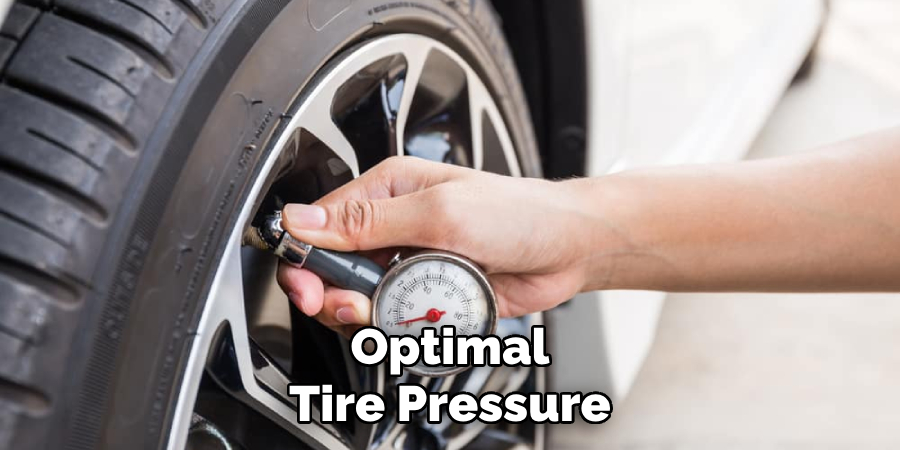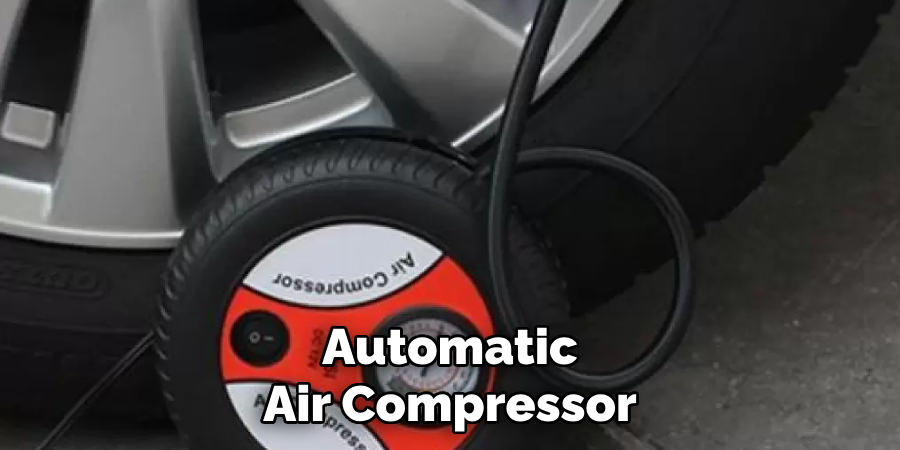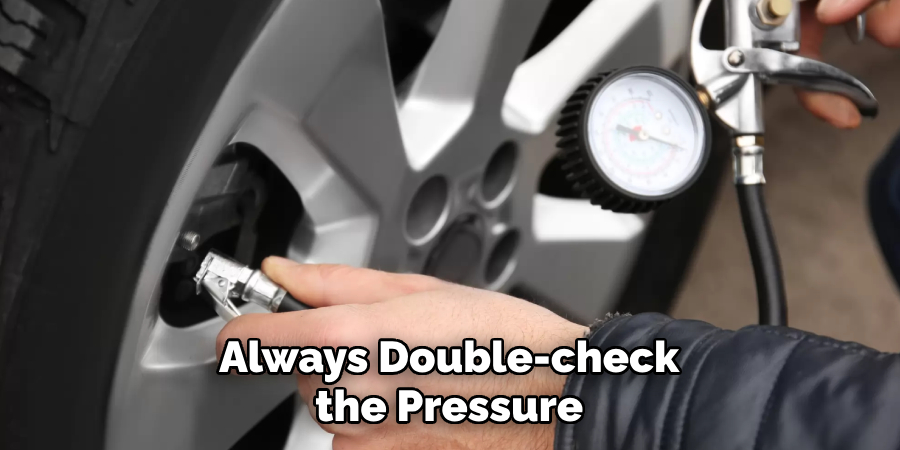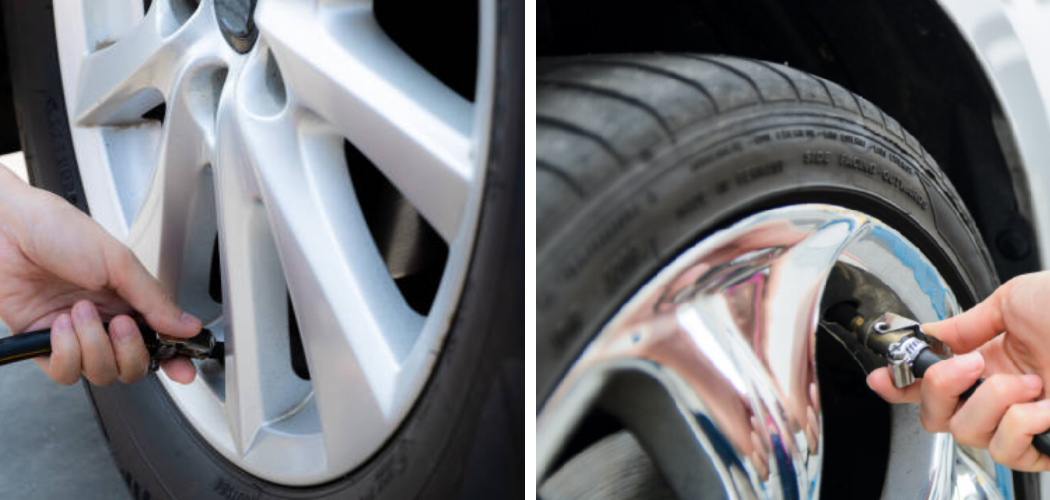Maintaining the correct tire pressure is a fundamental aspect of vehicle upkeep that directly influences safety, fuel efficiency, and overall performance. Knowing how to remove air from tires is an essential skill that allows drivers to fine-tune pressure levels according to specific requirements. Whether you’ve inadvertently overinflated your tires or need to adjust pressure for optimal performance in varying driving conditions, this guide will provide a step-by-step walkthrough.

From identifying the recommended pressure levels to utilizing tire pressure gauges and releasing excess air safely, we’ll explore the nuances of tire pressure management. Join us on this journey as we demystify the process, empowering drivers with the knowledge and confidence to maintain their vehicle’s tire pressure at the optimal levels for a smoother, safer, and more fuel-efficient ride.
Importance of Maintaining Proper Tire Pressure
Maintaining the appropriate tire pressure is not just crucial for your vehicle’s performance, but it is also a matter of safety. Overinflated tires tend to be more rigid and stiff, resulting in a reduced area of the tire in contact with the road. This can lead to less grip and an increased risk of damage from road hazards like potholes. On the other hand, underinflated tires can cause excessive heat build-up, leading to tire failure and, in extreme cases, blowouts.
Properly inflated tires ensure optimal grip on the road surface, enhancing vehicle handling and stability. They also contribute to improved fuel efficiency by reducing rolling resistance. The tread wear pattern on correctly inflated tires is even, ensuring longer tread life and reducing the need for frequent tire replacements. Understanding how to remove excess air from overinflated tires and add air to underinflated ones is critical in maintaining the right tire pressure, ultimately promoting a safe and efficient driving experience.
Understanding Tire Pressure
Tire pressure is simply the amount of air in your vehicle’s tires, typically measured in pounds per square inch (psi). The optimal tire pressure varies among vehicles, largely dependent on the vehicle’s weight, tire size, and the manufacturer’s specifications. This information is usually found in the vehicle’s owner manual or on a sticker inside the driver’s door jamb or glove box door.

While the recommended tire pressure can differ from one vehicle to another, a common range is between 30 and 35 psi. It’s important to note that tire pressure fluctuates with temperature changes – it decreases in cold weather and increases in hot weather. Therefore, tire pressure should be checked regularly and especially when there are significant temperature shifts.
Knowing how to interpret tire pressure readings is vital. A reading higher than the manufacturer’s recommendation indicates an overinflated tire, which could compromise the vehicle’s grip on the road.
10 Methods How to Remove Air from Tires
1. Using a Tire Pressure Gauge
The most common and effective method for removing air from tires is by using a tire pressure gauge. This tool allows you to accurately measure the air pressure in your tires and release any excess air by pressing down on the valve stem with the gauge.
2. Deflating Valve Caps
Some vehicles come equipped with deflating valve caps, which allow you to release small amounts of air from your tires without needing a separate tool. Simply unscrew the cap slightly to release air, and then tighten it back up when you reach the desired pressure.
3. Manual Hand Pump
If you don’t have access to a tire pressure gauge or deflating valve caps, you can also use a manual hand pump to remove air from your tires. These pumps typically come with an attached hose that can be connected to your tire’s valve stem for easy inflation and deflation.
4. Automatic Air Compressor
For those who want a quick and easy method for removing air from their tires, an automatic air compressor is a great option. These devices can be plugged into your car’s cigarette lighter or power outlet and will automatically inflate or deflate your tires to the desired pressure.

5. Draining Valve
Some larger vehicles, such as RVs or trailers, may have a draining valve specifically designed for releasing air from their tires. This valve is typically located near the bottom of the tire and can be opened by using a wrench or other tool.
6. Using Your Car’s Suspension System
Another method for removing air from your tires is by using your car’s suspension system. This involves bouncing or rocking your vehicle while it is parked on level ground, which will cause excess air to escape through the valves.
7. Letting Out Air While Driving
In some cases, simply driving at high speeds can cause enough friction between the road and your tires to release excess air through the valves. However, this method should only be used in emergency situations and is not recommended for regular tire maintenance.
8. Using a Puncture Repair Kit
If your tire has a puncture or leak, you can use a puncture repair kit to remove air from the affected tire. These kits typically come with a sealant that can be injected into the tire to seal any holes and prevent further air loss.
9. Removing the Valve Stem Core
For more stubborn cases of overinflated tires, you may need to remove the valve stem core using a specialized tool. This will allow all of the air to escape quickly and efficiently.

10. Seeking Professional Help
If none of these methods work or if you are uncomfortable attempting them yourself, it is always best to seek professional help from a mechanic or tire specialist. They will have the necessary tools and expertise to safely remove air from your tires and ensure they are properly inflated.
Reasons for Removing Air from Tires
There are various reasons why you might need to remove air from your tires. The most common reason is due to the tires being overinflated. Overinflation can lead to a decrease in tire traction because it reduces the amount of tire surface in contact with the road. This can potentially affect the vehicle’s handling, making it more difficult to control, and can increase the risk of a tire blowout due to the added stress on the tire walls.
Temperature changes can also affect tire pressure. As temperatures rise, so does the air pressure in your tires, possibly causing them to become overinflated. Therefore, during hot weather or after long drives, it might be necessary to let some air out of your tires to maintain optimal tire pressure.
Another reason for removing air from tires is to adapt to different driving conditions. For instance, when driving off-road or on slippery surfaces like snow or mud, slightly deflated tires can provide better traction. However, it’s crucial to re-inflate your tires to the recommended pressure once you return to normal driving conditions.
Safety Precautions When Removing Air from Tires
Undertaking any task related to your vehicle requires careful attention to safety. When removing air from tires, there are several precautions that you should always keep in mind:

- Wear Protective Gear: Always ensure you’re wearing protective eyewear and gloves to protect yourself from any potential harm. The valve stem can sometimes release air forcefully, which can lead to tiny particles getting into your eyes.
- Use the Correct Tools: Using improper tools or instruments can damage your tire or valve stem, and potentially lead to a tire blowout. Always use the correct tools that are specifically designed for the task.
- Check Tire Temperature: Never release air from a tire that is hot from recent use. High temperatures can increase the pressure inside the tire, causing a powerful and potentially dangerous stream of air when the valve is opened.
- Take your Time: Don’t rush the process. Releasing air too quickly can cause the tire pressure to drop too rapidly, which might damage the tire. Slow, steady deflation is the safest method.
- Double-Check Pressure: After deflating your tires, always double-check the pressure with an accurate gauge. This ensures you have not over-deflated, which could lead to other safety issues down the line.
- Know the Optimal Pressure: Always refer to the vehicle owner’s manual to find the recommended tire pressure for your particular vehicle. This knowledge will help you maintain the optimal tire pressure, promoting better vehicle performance and safer driving conditions.
Conclusion
In conclusion, removing air from tires may seem like a small and simple task, but it is one that is often overlooked. However, as we have discussed in this blog post, properly maintaining the air pressure in your tires is vital for both safety and performance. By following these steps on how to remove air from tires, you can ensure that your vehicle runs smoothly and efficiently, while also promoting tire longevity and reducing the risk of accidents.
Remember to always check your tire pressure regularly and never be afraid to reach out for professional help if needed. With these tips, you can confidently navigate the process of removing air from your tires with ease. So the next time you notice uneven tread wear or a decrease in gas mileage, don’t hesitate to take action and check your tire pressure. Your vehicle – and your wallet – will thank you.

